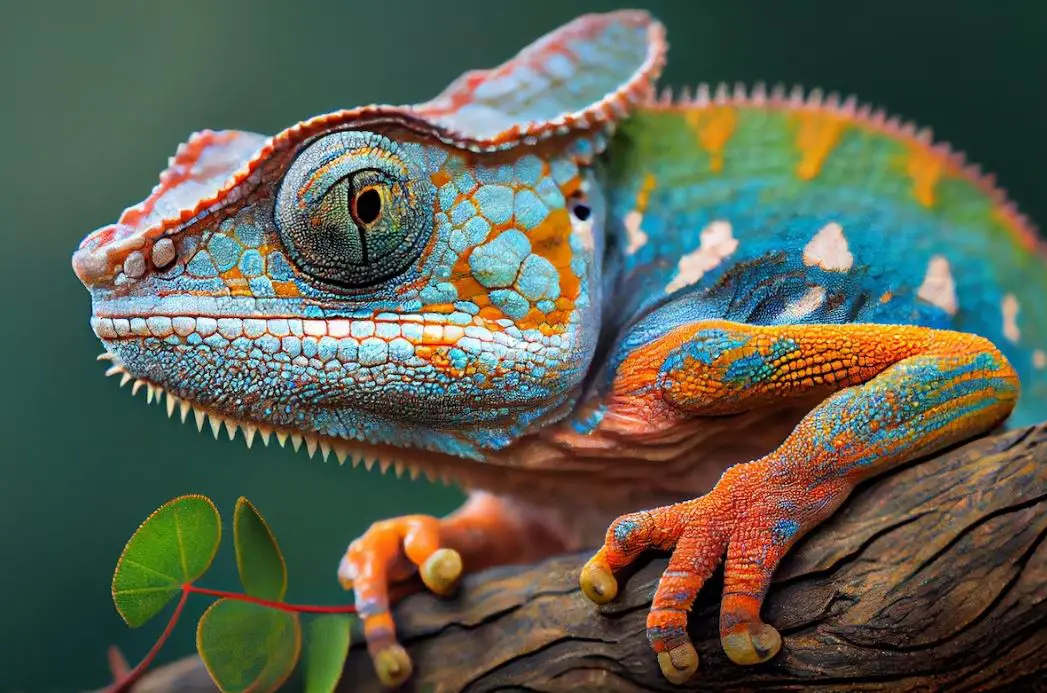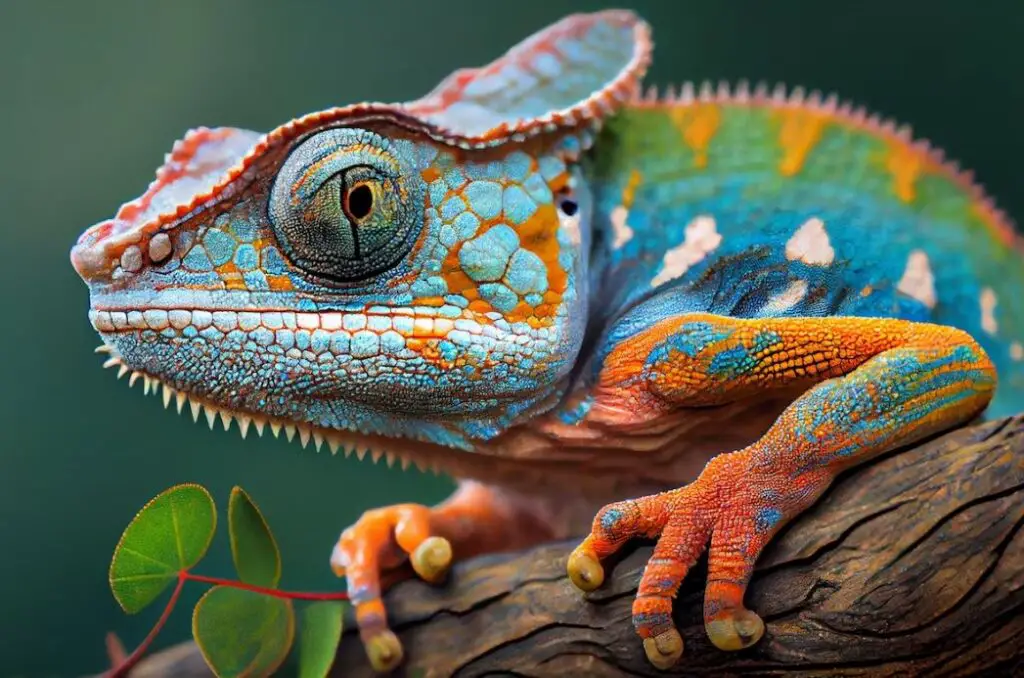Molecular Regulation of Camouflage in Chameleons

The Fascinating World of Chameleons
Chameleons, the charismatic reptiles known for their remarkable ability to change colors, have captivated human imagination for centuries. Their unique camouflage skills allow them to blend seamlessly into their surroundings, making them true masters of disguise.
But how exactly do these enigmatic creatures achieve such a feat? In this article, we will delve into the molecular regulation of chameleon camouflage and explore the evolutionary journey that led to this extraordinary adaptation.
Table of Contents
The Enigma of Chameleon Camouflage
Camouflage is a vital survival strategy employed by numerous organisms in the animal kingdom, but chameleons take it to a whole new level. Their ability to alter their skin coloration in response to different stimuli, such as light, temperature, and mood, is unparalleled.
By blending in with their environment, chameleons can evade predators, hunt more effectively, and communicate with conspecifics. The intricacies of this adaptive trait have intrigued scientists for decades, leading to groundbreaking discoveries in the field of molecular biology.
The Evolutionary Journey of Chameleons
Ancient Origins of Chameleons
Chameleons have a long evolutionary history that dates back over 65 million years. Fossil evidence suggests that their ancestors roamed the Earth during the Late Cretaceous period, coexisting with dinosaurs.
These ancient reptiles, although lacking the full range of color-changing abilities seen in modern chameleons, possessed certain skeletal characteristics that foreshadowed their future camouflage prowess.
Adaptive Radiation and Diversification
Following the extinction of dinosaurs, chameleons underwent a process called adaptive radiation, where they diversified into various ecological niches.
This diversification led to the emergence of more than 200 different chameleon species, each adapted to specific habitats and environmental conditions. The evolution of camouflage played a crucial role in their survival and reproductive success.
The Evolution of Camouflage
Camouflage in chameleons is not a static trait but rather an ever-evolving phenomenon. Over millions of years, natural selection favored individuals with better camouflage abilities, resulting in the refinement and diversification of camouflage mechanisms.
The ability to change skin coloration, along with structural adaptations, gradually evolved to meet the challenges posed by different environments.
The Science of Chameleon Camouflage
Understanding Camouflage Mechanisms
To comprehend the molecular regulation of chameleon camouflage, we must first grasp the basic principles underlying this remarkable phenomenon.
Camouflage in chameleons is a complex interplay of various factors, including pigment cells, structural adaptations, and behavioral strategies. By combining these elements, chameleons achieve exceptional camouflage that allows them to remain inconspicuous in their surroundings.
Chromatophores: The Pigment Cells
At the core of chameleon camouflage are specialized pigment cells called chromatophores. These cells contain pigments responsible for the diverse range of colors displayed by chameleons.
Through precise control of chromatophore expansion and contraction, chameleons can adjust their coloration, blending with the background or expressing vibrant hues during social interactions.
Structural Adaptations: Skin and Appendages
While chromatophores contribute significantly to chameleon camouflage, structural adaptations also play a vital role. Chameleon skin possesses unique properties, such as nanocrystals and photonic structures, which interact with light to produce specific colors and patterns.
Furthermore, specialized appendages like head crests and body extensions enhance camouflage by disrupting the silhouette and breaking up the chameleon’s outline.
Molecular Players in Chameleon Camouflage
Gene Expression and Regulation
The regulation of camouflage genes is a complex process involving the precise orchestration of genetic networks. Through the activation or suppression of specific genes, chameleons can initiate color change responses.
Transcription factors and signaling pathways play pivotal roles in controlling the expression of camouflage-related genes, ensuring the timely and appropriate deployment of camouflage mechanisms.
The Role of Opsins and Color Vision
Opsins, the photoreceptor proteins found in chameleon eyes, enable color vision and light perception. Chameleons possess a diverse array of opsin genes, allowing them to perceive and respond to various wavelengths of light.
The interplay between opsins, photoreception, and color change provides chameleons with the ability to fine-tune their camouflage response based on visual cues from their environment.
Hormonal Influence on Color Change
Hormones play a critical role in modulating chameleon camouflage. Changes in hormone levels, such as stress hormones or reproductive hormones, can trigger color variation.
The intricate interplay between hormones, neurotransmitters, and camouflage genes forms a complex regulatory network, ensuring that color change responses are finely tuned and context-specific.
Unraveling the Camouflage Genetic Code
Genome Sequencing and Comparative Studies
Advancements in genomic technologies have allowed scientists to unravel the genetic blueprint behind chameleon camouflage.
Through genome sequencing and comparative studies, researchers have identified candidate genes associated with color change, structural adaptations, and sensory perception.
Comparative genomics has also revealed intriguing insights into the genetic basis of chameleon camouflage diversity among different species.
Candidate Genes for Camouflage
Several candidate genes have emerged as key players in chameleon camouflage. These genes are involved in pigmentation, structural development, and neural signaling pathways.
By studying the function and regulation of these genes, researchers gain a deeper understanding of the molecular mechanisms that underlie chameleon camouflage.
Epigenetics and Environmental Influences
Epigenetic modifications, such as DNA methylation and histone modifications, can influence gene expression without altering the underlying DNA sequence.
These epigenetic marks can be influenced by environmental factors, providing a mechanism through which chameleons can adapt their camouflage to specific habitats. Epigenetics adds another layer of complexity to the already intricate molecular regulation of chameleon camouflage.
The Complexity of Chameleon Camouflage
Context-Dependent Color Change
Chameleon camouflage is highly context-dependent, meaning that color change responses are tailored to the specific environment and stimuli. Chameleons can exhibit different color patterns during courtship, aggression, or while navigating diverse habitats.
This contextual adaptation ensures optimal camouflage, enhancing their survival and reproductive success in ever-changing surroundings.
Camouflage Strategies in Different Environments
Chameleon species inhabit a wide range of ecosystems, from rainforests to deserts. Consequently, they have evolved various camouflage strategies to thrive in these distinct environments.
Arboreal chameleons may possess green coloration to blend with foliage, while species dwelling in arid regions might exhibit earthy tones to match their surroundings. Each environment presents unique challenges, prompting chameleons to adapt their camouflage strategies accordingly.
Behavioral Adaptations for Enhanced Camouflage
Chameleon camouflage extends beyond mere color change. These reptiles employ a range of behavioral adaptations to augment their camouflage effectiveness. Slow, deliberate movements, body postures, and even the use of visual displays contribute to their ability to remain concealed.
By integrating these behavioral strategies with their color-changing capabilities, chameleons maximize their camouflage potential.

Applications and Implications
Bioinspiration and Biomimicry
Chameleon camouflage has inspired scientists and engineers in the development of new technologies. The ability to dynamically change color finds applications in adaptive camouflage for military purposes, responsive displays, and even wearable technology.
By emulating nature’s designs, researchers are unlocking innovative solutions to real-world challenges.
Medical and Technological Advancements
The study of chameleon camouflage not only sheds light on natural adaptations but also has implications for human health and technology. Understanding the mechanisms underlying color change may contribute to advancements in regenerative medicine, wound healing, and tissue engineering.
Furthermore, the insights gained from studying chameleon camouflage can guide the development of novel imaging and sensing technologies.
Conservation and Evolutionary Insights
Chameleons, like many other species, face threats due to habitat loss, climate change, and illegal trade. Understanding the molecular regulation of chameleon camouflage can aid conservation efforts by providing insights into the adaptive potential and vulnerability of these remarkable reptiles.
Furthermore, studying the evolutionary history of chameleons can illuminate broader patterns of adaptation and speciation.
Conclusion
The molecular regulation of camouflage in chameleons represents a fascinating intersection of biology, genetics, and behavior. Through the intricate coordination of pigment cells, genetic networks, and environmental cues, chameleons have evolved the extraordinary ability to blend seamlessly with their surroundings.
Unraveling the secrets of chameleon camouflage not only deepens our appreciation for the wonders of nature but also offers practical applications in various fields. As we continue to unveil the mysteries of chameleon camouflage, we gain valuable insights into the complexities of life’s adaptive solutions.
Frequently Asked Questions (FAQs)
How fast can chameleons change their colors?
Chameleons can change their colors relatively quickly, with some species capable of achieving complete color transformation within a matter of minutes.
Do all chameleons have the same camouflage abilities?
While most chameleons possess the ability to change colors, the extent and effectiveness of their camouflage may vary between species. Some chameleons have more specialized adaptations for specific habitats or behaviors.
Are there any other animals besides chameleons that can change colors?
Yes, there are other animals that can change colors, such as certain species of octopuses, cuttlefish, and some fish. However, the mechanisms and purposes of color change may differ among these species.
Can chameleons change colors at will?
Chameleons cannot change colors at will in the sense of consciously controlling their appearance. Color change is primarily a response to environmental cues and internal physiological factors.
Are there any practical applications of studying chameleon camouflage?
Studying chameleon camouflage can have practical applications in various fields, including material science, robotics, and military technology. Understanding the molecular mechanisms of chameleon camouflage may inspire innovative solutions for adaptive camouflage in human-made systems.
Also READ!
12 Transparent Animals That Have Perfected Camouflage. READ:knovhov.com/12-transparent-animals-with-invisible-camouflage/
